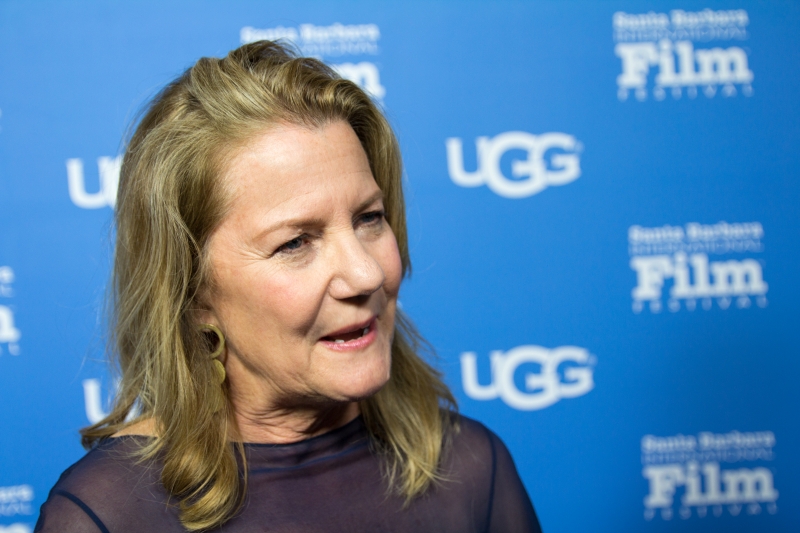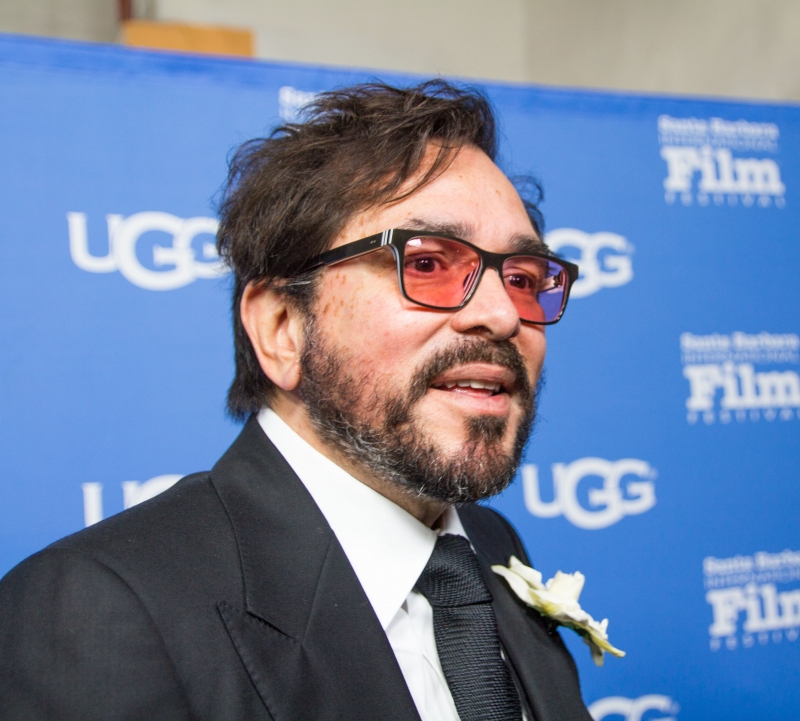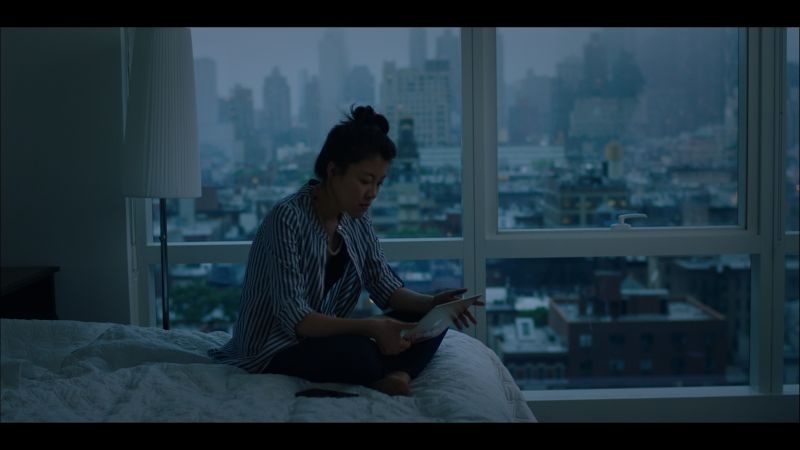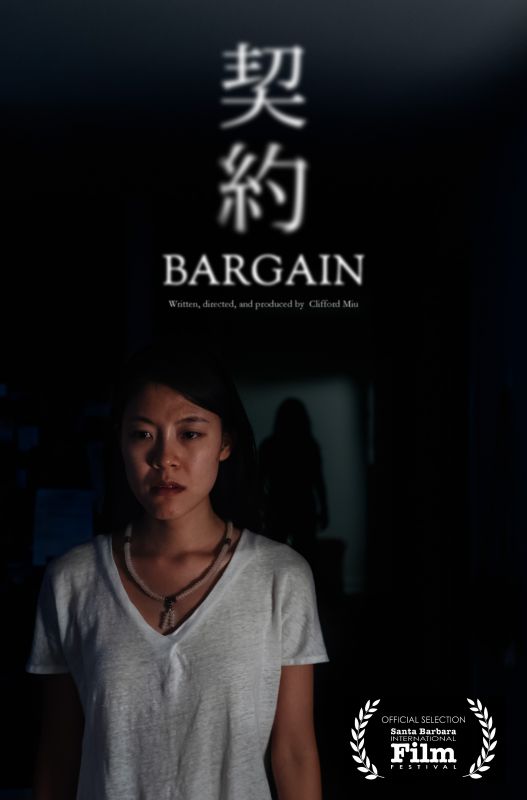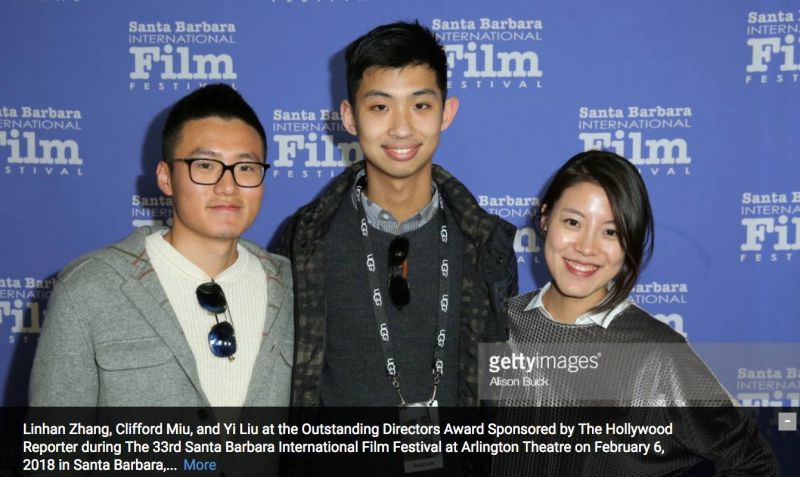|
|
||
|
Pro Tools
FILMFESTIVALS | 24/7 world wide coverageWelcome ! Enjoy the best of both worlds: Film & Festival News, exploring the best of the film festivals community. Launched in 1995, relentlessly connecting films to festivals, documenting and promoting festivals worldwide. We are sorry for this ongoing disruption. We are working on it. Please Do Not Publish until this message disappears. For collaboration, editorial contributions, or publicity, please send us an email here. User login |
Santa Barbara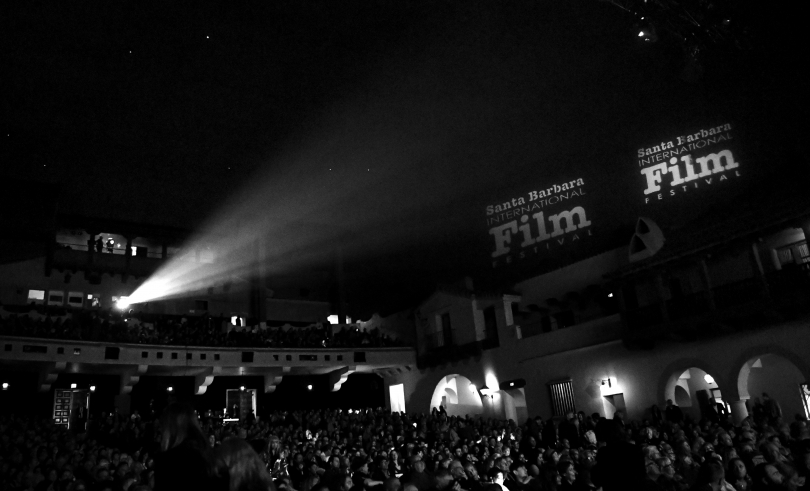
SBIFF is a 501(c)(3) non-profit arts and education organization dedicated to making a positive impact utilizing the power of film. SBIFF is a year-round organization that is best known for its main film festival that takes place each year in February. Over the past 30 years the Santa Barbara International Film Festival has become one of the leading film festivals in the United States – attracting 90,000 attendees and offering 11days of 200+ films, tributes and symposiums. We bring the best of independent and international cinema to Santa Barbara, and we continue to expand our year-round operation to include a wide range of educational programming, fulfilling our mission to engage, enrich and inspire our community through film.
In June 2016, SBIFF entered a new era with the acquisition of the historic and beloved Riviera Theatre. The theatre is SBIFF’s new home and is the catalyst for our program expansion. This marks the first time that Santa Barbara has had a 24/7 community center focused on the art of film and is an incredible opportunity to expand our mission of educational outreach. Particularly important to SBIFF is making available high quality learning opportunities for underserved and vulnerable populations. Our programs and reach are more robust than ever before.  Interview with Alexei Barrionuevo on 'WAITING FOR THE DROP: Rise of the Superstar Djs' (2018)
Alexei Barrionuevo Argentinian/American filmmaker Alexei Barrionuevo's debut feature doc 'WAITING FOR THE DROP: Rise of the Superstar Djs' (2018) follows the fascinating modern EDM (Electronic Dance Music) movement from the early 90s through its rises and falls to present day. The film travels to exotic party 'it' locales around the world including Ibiza, London, Miami and Las Vegas. The film's legendary DJ Superstar guests include: Paul Oakenfold, Sebastian Ingrosso, Hardwell, Carl Cox, Tiesto and the Swedish House Mafia; all are accompanied by a tingling upbeat soundtrack that begs the viewer to get up and dance while watching. The film was recently screened at the 2018 Santa Barbara International Film Festival. I recently interviewed Alexei about his film. Here is what he had to say:
For audiences who don't know, what does 'WAITING FOR THE DROP' mean? ALEXEI: I wanted the title to work on a few levels. On one level, DJs and the fans are always waiting for the drop – that is, waiting for that moment of explosion and euphoria and freedom that is a feature of electronic dance music. That became even more important in this era of EDM, when music producers and the music industry realized that ‘the drop’ should be something that they emphasized more than the ‘journey’ that had always defined it, in order to feed the Millennial crowd’s short-attention-span expectations. So drops were literally built into modern EDM songs to hit every 30 seconds. It became a formula, a way to give the crowd the same dopamine hit that they get from receiving messages and Instagram alerts on their cell phones. ALEXEI CONT'D: But there was a deeper level in the title that speaks to the theme of the movie. I wanted a title that reflected the expectations for this entire moment, that spoke to the loss of innocence that is at its heart. Most DJs and people in the electronic music industry never dreamed they could bring their music to the masses like they have been able to these past few years. It was always an underground movement, stigmatized by an association to drugs, particularly Ecstasy. So the more I reported out the story the more I heard people in the music industry nervously talking about how they were waiting on pins and needles for this whole moment of big money and DJ fees and widespread popularity to come crashing down – waiting, in effect, for the drop. When I ran the title by Fat Boy Slim in Ibiza he quickly complimented it as spot on, and he then delivered that classic line at the end of the film about how he saw it all playing out.
When did you start listening to EDM and when did it become a real impact in your life? ALEXEI: I was first drawn into the world of electronic music when I was living in Europe in the early 2000s. In Belgium I discovered the classic Euro trance being made famous by DJs like Tiësto, Paul Oakenfold and Ferry Corsten in clubs in Antwerp, and across the border into the Netherlands. And then in 2004 I went to Ibiza for the first time, where I came into contact with the sort of classic house music that had been exported from my home city of Chicago. That trip sorta blew my mind. I saw DJs like Sasha and Erik Morrillo do long sets that really helped me understand the concept of a musical ‘journey.’ I remember hearing electronic music everywhere on the island, even in the bathrooms in McDonald’s.
Why do you feel it important to tell the history of electronic music? ALEXEI: The term ‘EDM’ has become ubiquitous in recent years in the United States, and DJs became pampered superstars whose images line the billboards in Las Vegas. But most Americans, and others throughout the world, know very little about how all this started back in Europe. What I was seeing was a string of documentary films about individual DJs that were manager-approved promotional vehicles for these artists or for individual events like Electric Daisy Carnival. They lacked perspective. They lacked edge. They lacked honesty, frankly. I knew that as a veteran journalist I could do something different. I first became inspired to do the film while visiting Ibiza in 2011. I was working on a magazine article for The New York Times about the famous dance club Pacha. I arranged to meet up with Paul Oakenfold. He spent part of two days with me recounting the history of how he and a few other British DJs had visited Ibiza and brought the scene back to the U.K., where they found a way to make it commercial. That was the birth of the concept of a ‘superstar’ DJ. I became obsessed with telling that story. ALEXEI CONT'D: But as I got deeper into the project I realized I had an even greater responsibility to explain how the second wave of EDM that had swept through the United States had become a cautionary tale about Wall Street greed and excess. At the same time I wanted to illustrate the magic of the movement and the idealized world of the original scene in Europe. The film I wanted to make was part history, part social commentary. It was meant to be a reference for the era, something that would be a lasting reminder of a powerful global movement and how it can be corrupted if you’re not careful.
You cover a lot of ground in your film. How long did it take to make and how much footage did you have? ALEXEI: All told, I have been working on this project for nearly five years. We began filming in Miami in 2013, and then launched the project more seriously that summer in Europe, where we filmed in the U.K., Netherlands, Ibiza and Sweden. On and off, we were filming up until 2016 and then went into post. As a journalist I was initially in an exploratory mode, filming a lot more interviews with DJs and kids than we ever needed, before later narrowing the focus on our main subjects. So we have some 7 terabytes of footage. I have some wonderful interviews with DJs like Luciano, Claude von Stroke and Miss Nine that sadly didn’t make the final cut.
Were there any significant challenges to the making of this film? (i.e. music rights or interviews). ALEXEI: Actually, the biggest challenges were access to the DJs and my obsession with doing this as an independently financed film. Because I approached this journalistically and not as a promotional opportunity for the artists, I had to find some inventive ways to gain access to some of the DJs themselves. That meant getting around their managers, who usually didn’t give me the time of day. We started out with cooperation from Paul Oakenfold, whom I went to see at his home in Hollywood. I later gained access to Carl Cox by cornering him on a street in Miami Beach and walking and talking with him for a few blocks before his manager showed up. And I was able to get our original teaser to Kaskade through an old friend whose kids went to school with Ryan’s kids in Los Angeles; his manager had ignored me for a year, but he wanted to be part of the project. ALEXEI CONT'D: Money was always a struggle because of some less-than-perfect planning in pre-production, and because I steadfastly refused to take any money from the industry or artists or their managers to make the movie, forcing me to tap friends and family as equity investors, and pour way more of my own money into the film than was smart.
What is your main goal to accomplish with this film? ALEXEI: More than anything, I wanted to create an emotional experience for the audience, a musical ‘journey,’ if you will. I also wanted to capture this moment in time, to create something memorable that people will look back on and say, “Hey, remember that EDM stuff…?” On a more personal level, this was my first feature film, so I wanted to prove to myself, more than anyone, that I could pull it off. And hopefully, I’ll get a chance to do it all over again someday soon.
Do you think EDM is dead? ALEXEI: I think that this version of EDM – the electro house, big room version – that exploded into a form of pop music, driven by festivals in the U.S. and the 30-second drops – is on the wane. I’m not sure it is totally dead but it’s definitely not the hot thing anymore. And DJ fees have fallen off for all but a handful of superstars. I think that the EDM movement, as defined by how these festivals mushroomed around the world and spurred the construction of $100 million clubs like Hakkasan in Las Vegas, has dimmed. There is no question that we experienced a “drop.” I think that there is a new underground bubbling up with new forms/genres of electronic dance music, and that the technological revolution will continue to drive younger fans to this kind of music. But will the concept of the ‘journey’ that defined great DJs in the past live on? I can only hope that people clamor for that in the future, because that concept, that experience, is worth preserving.
Why was the DJ supergroup called Swedish House Mafia? ALEXEI: There are at least two versions of this story! The one Seb Ingrosso tells in the film is that the Swedes – Ingrosso, Axwell and Steve Angello – were getting picked on by dance music aficionados at a music forum for their style of house music. And when they pushed back someone in the audience said, “Who the fuck do you think you are, the Swedish house mafia?” as if they were some kind of tough-guy mafia that knew it all. And then Ingrosso (or Axwell) responded, “That’s exactly what we are.” And the name stuck, and those guys became one of the pop electronic dance music groups in history. It’s especially funny because Ingrosso is half-Italian.
You recently attended SBIFF. How was that and how did audiences react to your film? ALEXEI: We had a truly wonderful experience premiering our film at SBIFF. We filled up the theater completely the first night, despite the stiff competition up the street with the awards presentation for Allison Janney and Margot Robbie. People seemed really engaged by the film, laughing at things I didn’t realize were that funny! And the questions in the Q&A were awesome, very probing and demonstrating a real awareness of the themes and story act. I think we had a mix of younger Millennials and older ravers. The Santa Barbara crowd struck me as very sophisticated and urbane.
What will you be working on next? ALEXEI: I am currently working on a script for a TV pilot about a troubled journalist. It’s a joint project with a friend from Austin, another former journalist who worked overseas. I am also sifting through some ideas for another feature documentary and working on a short doc about my father, who passed away two years ago. And I am on the hunt for a book or treatment to adapt and package as a film project.
Follow the film here:
twitter
@waitingftdrop
instagram
@waitingftdrop
Facebook
Interview by Vanessa McMahon
02.04.2018 | Santa Barbara's blog Cat. : Interview with Alexei Barrionuevo on 'Waiting for the Drop: Rise of the Superstar Djs' (2018) Interviews PEOPLE
|
LinksThe Bulletin Board > The Bulletin Board Blog Following News Interview with EFM (Berlin) Director
Interview with IFTA Chairman (AFM)
Interview with Cannes Marche du Film Director
Filmfestivals.com dailies live coverage from > Live from India
Useful links for the indies: > Big files transfer
+ SUBSCRIBE to the weekly Newsletter DealsUser imagesAbout Santa Barbara The Santa Barbara International Film Festival has star wattage and a wealth of premieres in a Mediterrean-style city by the sea.
Blogging here with dailies: View my profile Send me a message The EditorUser contributions |


















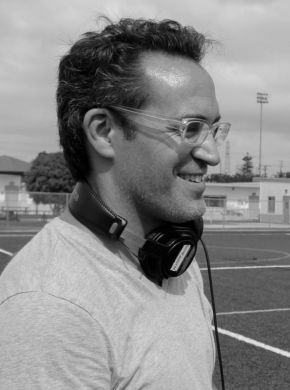
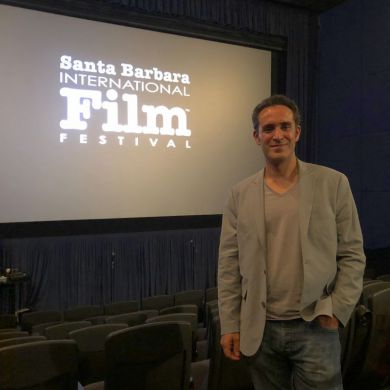 Alexei Barrionuevo
Alexei Barrionuevo
